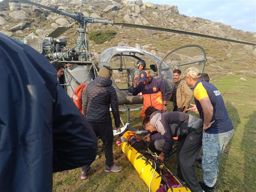2034: A Novel of the Next World War by Elliot Ackerman, Admiral James Stavridis USN. Penguin. Pages 319. Rs1,699
Book Title: 2034: A Novel of the Next World War
Author: Elliot Ackerman, Admiral James Stavridis USN
Roopinder Singh
Aconflict that realigns the world order, with millions of dead; an inevitable trajectory of hubris, exceptionalism and nationalist jingoism makes the story painfully plausible. No matter which way you read it — a work of fiction, a position paper, a warning — ‘2034’ is exciting and disturbing. The authors are distinguished former US military officers, both with several books under their belt. Naturally, they write with authority about sailors and soldiers under arms and strategies of war.
The South China Sea is a persistent theatre of tension between China and the rest of the world that dismisses its suzerainty over that which the Red Dragon regards as its backyard. This is an old issue, but it has a new urgency in the aggressive “wolf-warrior diplomacy” evident these days. Beijing now asserts itself vociferously, flexing its recently-developed muscle, supported by its military, manufacturing and cyber capabilities.
To get back to the book, in 2034, American warships are on a “freedom of navigation” mission that the US periodically conducts to challenge what it considers “excessive territorial claims” of other nations. Leading the flotilla of three Arleigh Burke-class destroyers is Captain Sarah Hunt, commodore of Destroyer Squadron 21 aboard John Paul Jones.
Simultaneously, flying one of the most sophisticated fighters in the US Navy in the Gulf of Hormuz is Maj Chris Mitchell, a Top Gun-type rakish hero with the call name “Wedge”, for whom the ultimate thrill is flying by the seat of his pants.
Both fail to follow the procedure to the letter, and it lets them down. The Chinese draw Captain Hunt into a trap and use advanced artificial intelligence-enabled blocking and cloaking devices to reduce the American ships’ sophisticated electronics to junk. Their weapons, which include Tomahawk missiles, are now useless. Led by the nuclear-powered carrier Zheng He, the Chinese Navy sinks the Carl Levin and Chung-Hoon, leaving a damaged John Paul Jones afloat to send a message.
Major Mitchell’s fighter’s avionics are compromised, and the Iranians capture him. Soon, Russia and India come into the picture, India, now a sophisticated cyber power, and Russia, still led by an ageing plutocrat Putin, as hungry as ever to expand his country’s borders.
The desk jockeys are by now in full play. In Washington, we have the Indian expat working in the US National Security Council, Dr Sandeep (Sandy) Chowdhury. Even as America’s woman President is on the way back to the capital, Sandeep is among those holding the fort. This leads to him sparring at the White House with the Chinese defence attaché, Admiral Lin Bao.
As pages unfurl, we see how quickly events spin out of control. The Chinese and the US leaders cannot break the mould and come to terms with the realities before them. The hawks prevail. A misunderstanding of the situation leads to further escalation, and then the ultimate horror, the use of nuclear weapons. Tactical, not strategic, so the damage is in millions, not billions of lives.
Sandeep, his family history, his uncle, retired Vice Admiral Anand Patel’s role in resolving the crisis — all these are sure to be a draw for readers here. One would leave it for them to know more about the events that lead to the emergence of India as a major world power.
The book is not your typical edge-of-the-seat action thriller. While the characters may lack depth, what should worry the reader is the lack of depth of character of the principals involved. So many of them are unable to rise above the fatal combination of ultra-nationalism, hubris and slavish devotion to the past. They lack the imagination to see a world beyond their conditioning.
Decades of relative peace in the world have made the present generation casual, even cavalier, about the cost of sending soldiers to kill fellow beings.
The need for vision and clarity of thought to cut through the chaff of the military-industrial mania is acute. Defences, cyber and otherwise, can be beefed up. However, international diplomacy is needed to moderate unilateral actions that can escalate into military conflicts. Otherwise, this book could well be prescient.
‘2034’ is a ship’s horn that seeks to warn. What impact it has remains to be seen.














